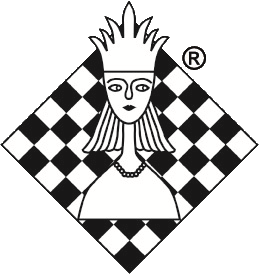The 1909 Saint Petersburg Chigorin Memorial tournament was held from 14 February to 12 March 1909 and ranks among the greatest chess tournaments of all time. It contains one of the most famous rook endings of all time. But even Akiba Rubinstein, with his excellent technique, made several mistakes. This was found thanks to many readers reactions to our request for analytica help.
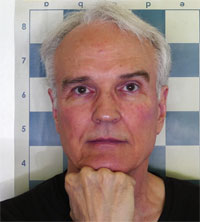 There was quick agreement over all points but one. Would 60.Rc1! still have drawn, or is White already lost? Several analysts including Alex Fishbein, Zoran Petronijevic, Alberto Oggero and Karsten Müller were of the opinion that White is lost in all cases. Stockfish 9 even gives a -4.6 evaluation after 66.Kc2!!. I put this into the ChessBase Let's Check record. Great was my surprise when I received Charles Sullivan's analysis.
There was quick agreement over all points but one. Would 60.Rc1! still have drawn, or is White already lost? Several analysts including Alex Fishbein, Zoran Petronijevic, Alberto Oggero and Karsten Müller were of the opinion that White is lost in all cases. Stockfish 9 even gives a -4.6 evaluation after 66.Kc2!!. I put this into the ChessBase Let's Check record. Great was my surprise when I received Charles Sullivan's analysis.
Sullivan proved that 60.Rc1! indeed would have defended, and Guy Haworth helped by generating an eight-piece tablebase with generator FinalGen for Sullivan's final critical position. I send this to the other analysts, and then Alex Fishbein, Zoran Petronijevic, Alberto Oggero and Michael Taktikos confirmed that Sullivan is right. He used Stockfish 11 and Leela Chess Zero. On my machine Houdini 6.02 also finds this, which I have written into ChessBase Let's Check. My congratulations to Charles Sullivan!
 Zoran Petronijevic again came up the most convincing proof of the other points and his analysis follows. I only added the Sullivan drawing proof of 60.Rc1! and its consequences. Zoran's points are:
Zoran Petronijevic again came up the most convincing proof of the other points and his analysis follows. I only added the Sullivan drawing proof of 60.Rc1! and its consequences. Zoran's points are:
- Although Black has the better pawn structure, the endgame is even.
- Both moves, either 41.Rc3 or 41.Ra2, lead to even play.
- In my opinion, the easiest way to draw is 43.h4.
- The clear mistake which leads to a losing position is 45.Ke2?. Instead, 45.h4 leads to even play.
- 50…Ra7, which was given an exclamation mark by Dvoretsky, is not necessary. 50…Re8 is more precise.
- 51…Re7, evaluated by Kasparov and Dvoretsky as an excellent move, is in fact a mistake which gives Black even play. Better was 51…Ra8.
- 52.Rc3 is an interesting move, although 52.a4! gives White a relatively easy draw.
- 53.a4 is normal. A good alternative is 53.Rd3.
- The move 56.Ke3? is a decisive mistake. In my opinion 56.Rc1 leads to a draw (see analyzes).
- Yes, I really wanted to prove that 58…Kb4 is a mistake. And it is a mistake according to Charles Sullivan's proof. 58…Rf3 was called for.
- 60.Rc1! would still have drawn. So 60.Ra3? was Spielmann's last mistake.
Here is the extensive analysis of the Spielmann-Rubinstein endgame. In it I have used the following books:
- Dvoretsky: Ucebnik endspilja, Moscow, 2016, (DEM).
- Encyclopaedia of chess endgames, Rook endgames, first and second editions - Chess informant, (ECE).
- Smyslov, Levenfish, Teorija ladjejnih okoncanij, Moscow, 1986
- Averbakh, Sakhmatnie okoncanija, Ladejnie, Moscow 1984.
- Donaldson, Minev, The life and games of Akiva Rubinstein, volume 1, 2018 "A positional disadvantage that occurs often is an abundance of 'pawn islands'."
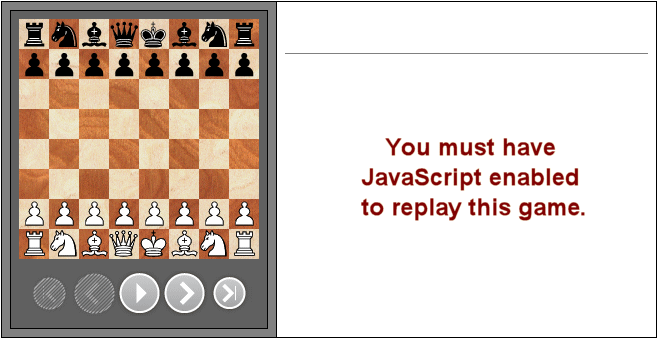
[Event "St.Petersburg"] [Site "?"] [Date "1909.??.??"] [Round "?"] [White "Spielmann, Rudolf"] [Black "Rubinstein, Akiba"] [Result "0-1"] [ECO "C90"] [Annotator "Petronijevic,Zoran"] [SetUp "1"] [FEN "1r3k2/5pp1/3p2p1/8/3P4/P6P/2R2P1K/8 b - - 0 40"] [PlyCount "71"] [EventDate "1909.??.??"] [SourceTitle "Endgame analyze"] [Source "ChessCafe/CB"] [SourceDate "2003.10.29"] [SourceVersion "1"] [SourceVersionDate "2003.10.29"] [SourceQuality "1"] {White has four islands against Black's two; this means that White has more vulnerable pawns that cannot protect each other. Therefore his position is inferior." - Dvoretsky} 40... Ra8 $1 (40... Rb3 $2 {is clearly worse, becaause after} 41. Ra2 Rd3 42. a4 Rxd4 43. a5 Rc4 44. a6 {the white rook is actively placed behind a passed pawn while the black rook must stand passively on a8.} Rc8 45. h4 (45. a7 Ra8 46. Kg3 $44 {Dvoretsky. The position is about even.}) 45... d5 46. Kg3 Ke7 47. Kf4 Kd6 $11) 41. Rc3 {Spielmann thought that his position is lost, which isnt true.} ({He though that even worse is} 41. Ra2 Ra4 42. Kg3 ({Very interesting is} 42. d5 Ke7 43. Rb2 Ra5 (43... Rxa3 44. Rb7+ Kf6 45. Rd7 Ra6 46. h4 $11) 44. Rb7+ Kf6 45. a4 Rxd5 46. Ra7 Rf5 47. Kg2 Rg5+ 48. Kf3 Ke6 49. a5 Rf5+ 50. Kg3 g5 51. Ra8 Rf4 52. a6 Ra4 53. a7 Ra3+ 54. Kg4 Kf6 55. Rd8 Ra4+ 56. Kf3 Rxa7 57. Rxd6+ Ke7 58. Rd4 {this position is a draw. - Petronijevic}) 42... Ke7 (42... Rxd4 $2 43. a4 $13 {Dvoretsky. This position is even.} Rd3+ 44. Kg2 Rc3 45. a5 Rc7 46. a6 Ra7 47. Kf3 Ke7 48. Ke4 Kd7 49. Kd5 g5 50. Ra1 Kc7 51. Rc1+ Kb8 52. Rc6 Re7 53. Kxd6 Re2 54. a7+ Kxa7 55. Rc7+ Kb6 56. Rxf7 Rd2+ 57. Ke5 Re2+ 58. Kd4 Kc6 59. Kd3 Ra2 60. Ke3 Ra5 61. Rxg7 $11 Ra3+ $11 {Lomonosov (Petronijevic).}) (42... g5 {Is interesting, although objectivelly it is a draw.}) 43. Kf3 (43. h4 $1 $11 {Petronijevic}) 43... Ke6 ( {Stronger is} 43... g5) 44. Ke4 (44. Re2+ $11 {Petronijevic}) 44... g5 { Smyslov, Levenfish} (44... d5+ {Spielmann} 45. Kd3 $5 (45. Ke3 Kf5 46. Ra1 Kg5 47. Kf3 Kh4 48. Kg2 f5 49. Rc1 Rxa3 50. Rc7 Ra4 51. Rxg7 Kg5 52. f4+ Kxf4 53. Rxg6 Ra2+ (53... Rxd4 $11 {Lomonosov}) 54. Kg1 Ke3 55. Re6+ Kxd4 56. h4 $11 { Lomonosov}) 45... Kf5 (45... Kd6 46. Kc3 Kc6 47. Kd3 Kb5 48. Rb2+) 46. Kc3 Ke4 47. Re2+ $13 {Dvoretsky.} Kf3 48. Re7 f5 49. Rxg7 Ra6 50. Rd7 Kxf2 51. Rxd5 Kg3 52. Re5 Kxh3 53. d5 f4 54. Kd2 f3 55. Ke3 Kg3 56. Rg5+ Kh4 57. Rg1 Rxa3+ 58. Kf2 $11 {Lomonosov (Petronijevic)}) 45. Ra1 ({Stronger is} 45. f3 d5+ 46. Ke3 Kf6 47. Ra1 Kg6 48. Ke2 Kf5 49. Ke3 Kf6 50. Ra2 Kg6 51. Ra1 Kh5 52. Kf2 f5 53. Kg3 f4+ 54. Kg2 Kh4 55. Ra2 Rxd4 56. a4 Rb4 57. a5 Rb7 58. a6 Ra7 59. Kf2 Ra8 60. Ra1 d4 61. Kg2 d3 62. a7 d2 63. Rd1 Rxa7 64. Rxd2 Ra3 65. Re2 $11 { Petronijevic}) 45... f6 ({Better is} 45... f5+ 46. Ke3 Kd5 47. Kd3 f4 48. Ra2 Rxd4+ 49. Ke2 Ra4 50. Kf3 Kd4 51. Rd2+ Ke5 52. Re2+ Kf5 53. Rd2 Rxa3+ 54. Kg2 Ke6 $19 {Petronijevic}) 46. Ra2 f5+ 47. Kd3 $2 (47. Ke3 $1 Kd5 48. f3 f4+ 49. Kf2 Kc4 50. Rc2+ Kd3 51. Rc7 Rxa3 52. Rxg7 Ra2+ 53. Kg1 Ra5 54. Rg6 Rd5 55. Kg2 Kxd4 56. Rh6 Kc5 57. h4 gxh4 58. Rxh4 $11 {Lomonosov (Petronijevic)}) 47... Kd5 48. Kc3 Rc4+ $2 ({Mistake after which the position is even. After} 48... Ke4 { Black is winning} 49. d5 Kxd5 50. Kd3 Ke5 51. Ke2 d5 52. Ra1 Ke4 53. Rg1 Rxa3 54. Rxg5 f4 $19 {Petronijevic}) 49. Kb3 Rxd4 50. a4 Rd3+ (50... Kc6 51. a5 Kb7 52. a6+ Ka7 53. Ra5 Rf4 54. Rd5 Rxf2 55. Rxd6 Rf3+ 56. Kc4 Rxh3 57. Rg6 g4 58. Kb5 Rb3+ 59. Ka5 $11 {Dvoretsky}) 51. Kb4 Rxh3 52. a5 Rh8 53. a6 Ke4 54. a7 Ra8 55. Kb5 Kf3 56. Kb6 $11 {Dvoretsky CONCLUSION: The position is draw even after 41.Ra2.}) ({To the similar position as in the game leads} 41. Rc6 Ke7 42. Rc7+ Ke8 43. Rc3 Ra4 44. Rd3) 41... Ra4 ({If Black tries} 41... g5 42. Kg3 Ke7 43. Kg4 Ra5 44. f4 Kf6 45. Rc6 Rd5 46. Rc4 gxf4 47. Kxf4 Rf5+ 48. Kg4 Ke6 49. a4 Rf1 50. h4 Rg1+ 51. Kf4 g6 52. Rb4 {the position is even (Petronijevic).}) 42. Rd3 ({To the even play also leads} 42. Kg3 Rxd4 43. Rc8+ Ke7 44. Ra8 Rd5 45. a4 Rd3+ 46. Kg2 Ra3 47. Ra6 g5 48. a5 d5 49. Ra7+ Ke6 50. a6 f6 51. Ra8 Ra5 52. a7 Kf7 53. Rd8 Rxa7 54. Rxd5 $11) 42... Ke7 43. Kg3 (43. d5 g5 $1 (43... Kf6 44. Rf3+) (43... f5 44. Re3+) 44. Kg2 Kf6 45. Rf3+ Kg6 46. Rd3 f6 $1 {Dvoretsky. This position is easy draw:} 47. Re3 Ra5 48. Re7 Rxa3 49. Re6 Ra6 50. Kf3 Kh5 51. Kg3 Rb6 52. Kf3 Kh4 53. Re8 Rb3+ 54. Kg2 g4 55. hxg4 Rd3 56. Rd8 Rxd5 57. Kf3 Rd3+ 58. Ke2 Rd4 59. Kf3 Kg5 60. Ke3 Ra4 61. Rxd6 Kxg4 $11 {(Petronijevic) Lomonosov}) (43. Kg2 $5 {Dvoretsky}) ({Probably easiest draw gives} 43. h4 Ra7 (43... Ke6 44. Re3+) 44. Re3+ Kf6 45. Kg2 Kf5 46. Kg3 f6 47. f3 Ra4 48. Re7 Rxa3 49. Rd7 Ra6 50. Kg2 $11 {Petronijevic}) 43... Ke6 44. Kf3 {"In my opinion this is an obvious positional error that was somehow left unnoticed by the annotators." - Dvoretsky. I think that it is a dubious move, and the position is still around equality.} ({Following line is suggested by Dvoretsky} 44. Re3+ $1 Kd7 (44... Kd5 45. Re7 Rxa3+ 46. Kg2) 45. Rd3 ({or} 45. Rf3 $5 f6 46. d5 Rd4 47. Rb3 Rxd5 48. Rb7+ Ke6 49. Rxg7 g5 50. Ra7 $11) 45... Kc6 46. Rc3+ Kd5 47. Rc7 Rxa3+ 48. Kg2 Ke6 49. d5+ Kf6 50. Rd7 Ra6 51. h4 {Dvoretsky. This line clearly shows that the position is equal.}) 44... Kd5 ({In case of} 44... g5 45. Kg4 $1 f6 46. f4 gxf4 47. Kxf4 {Although White's pawns are shattered, the position is even.} g6 48. h4 Kd5 49. Ke3 Ra8 50. Kf2 Ke6 51. Re3+ Kf7 52. Rh3 f5 53. h5 gxh5 54. Rxh5 Kg6 55. Rh3 Ra4 56. Rg3+ Kf6 57. Rg8 Rxa3 $11 { Lomonosov}) ({Black can also try} 44... Kf5 {however, after} 45. Ke2 f6 46. Rf3+ Ke4 47. Re3+ Kxd4 48. Rg3 Ke5 49. Rxg6 Rxa3 50. Rxg7 Rxh3 {The position is easy draw (Lomonosov) - Petronijevic.}) 45. Ke2 $2 {After this move, the position is lost for White.} ({Dvoretsky's suggestion} 45. h4 $1 {really leads to an even play.} Ra7 (45... Rxd4 46. Ke3 {Dvoretsky} Rxd3+ 47. Kxd3 f5 { this position is even.}) (45... Kc4 46. Ke2 d5 47. Rf3 Ra7 48. a4 Kxd4 49. a5 Kc4 50. a6 Kb5 51. Ke3 Kxa6 52. Kd4 Kb6 53. Kxd5 Rd7+ 54. Ke4 Kc5 55. Rc3+ Kd6 56. Kf3 Rb7 57. Ra3 Ke6 58. Ra6+ Ke7 59. Ra4 $11 {Petronijevic}) 46. Ke3 Re7+ 47. Kd2 Re4 48. Rh3 Kc4 49. Rc3+ Kd5 (49... Kxd4 50. Rd3+ Kc5 51. Rc3+ Kb6 52. Rb3+ Kc6 53. Rc3+ Kd7 54. Rf3 f6 55. Rg3 Rxh4 56. Rxg6 $11 {Petronijevic}) 50. Rh3 Rf4 51. Ke2 Kc4 52. a4 Re4+ 53. Re3 Rxh4 54. Re7 f6 55. Rxg7 Kxd4 56. a5 Ke5 57. a6 Ra4 58. a7 d5 59. f4+ Kxf4 60. Rxg6 $11 {Lomonosov (Petronijevic)}) {Diagram [#]} 45... g5 $1 46. Rb3 ({White can try also} 46. Rc3 {although Black is winning:} f6 47. Ke3 Rc4 48. Rb3 Rc1 (48... Ke6 49. Kd3 Ra4 50. Ke4 d5+ 51. Ke3 Kf5 52. Rd3 {White should hold.}) 49. Rb5+ Ke6 50. Rb3 Rh1 51. Ke2 (51. Kd2 Kd5 52. Ke2 Kxd4 53. Rd3+ Kc5 54. Rc3+ Kd5 55. Rd3+ Ke6 56. Re3+ Kd7 57. Rb3 (57. Rg3 d5 58. Rd3 (58. f4 gxf4 59. Rxg7+ Ke6 60. Rh7 d4 61. a4 Ra1 62. Ra7 Ra3 63. h4 Kf5 64. h5 f3+ 65. Kf2 Kf4 66. h6 Ra2+ 67. Kg1 Rg2+ 68. Kf1 Rh2 69. h7 f2 70. Ra6 (70. Ra8 Rxh7 71. Kxf2 Rh2+ $19 {Lomonosov}) 70... f5 71. h8=R Rxh8 72. Kxf2 Rh2+ $19 {Lomonosov}) 58... Kd6 59. Rd1 Rxh3 60. Ra1 d4 61. a4 Kc6 62. f3 (62. Rc1+ Kb6 63. Rc8 d3+ 64. Ke1 Rh1+ 65. Kd2 Rf1 66. Kxd3 Rxf2 67. Ke3 Ra2 68. Ra8 Kb7 69. Ra5 Ra3+ 70. Kd2 g4 $19) 62... Kb6 63. a5+ Ka6 64. Rd1 Rh4 65. Rb1 Kxa5 $19) 57... d5 58. a4 Ra1 59. Rb7+ Ke6 60. Ra7 Ra3 61. a5 Rxh3 62. Rxg7 Ra3 63. Ra7 Kf5 64. a6 Kg4 65. Rd7 Ra2+ 66. Kf1 Kf3 67. Kg1 Rxa6 68. Rxd5 Ra1+ 69. Kh2 Ra4 $19 {Lomonosov}) 51... Kd5 52. Rc3 Kxd4 {and Black is winning. Possible line is:} 53. Rd3+ Ke5 54. Re3+ Kd5 55. Rd3+ Kc6 56. Rc3+ Kd7 57. Rg3 d5 58. Ke3 Kd6 59. Kd4 Rf1 60. Rf3 Rb1 61. Rc3 Rb2 62. Rf3 Ra2 63. Rb3 Rxf2 64. Rb6+ Kc7 65. Re6 Kd7 66. Rb6 Rd2+ 67. Kc5 Ke7 68. Rb1 Ke6 69. a4 Ra2 70. Kb4 d4 71. Rd1 Kd5 72. Kb3 (72. a5 Rb2+ 73. Ka4 Ke4 74. Re1+ Kf3 75. Rd1 Ke3 76. Re1+ Re2 77. Rxe2+ Kxe2 78. a6 d3 79. a7 d2 80. a8=Q d1=Q+ $19) 72... Rh2 73. h4 Rxh4 74. a5 Rh3+ 75. Kb4 Rh8 76. Kb3 f5 77. Kc2 g4 78. Rf1 g6 79. a6 Ra8 80. Ra1 Ke4 81. a7 g3 82. Kd1 g2 $19) (46. Re3 f6 47. Rg3) 46... f6 (46... Rxd4 $2 47. Rb5+ $11 {Dvoretzky} (47. Rd3 {also leads to salvation:} Kc4 48. Rxd4+ (48. Re3 $2 d5 49. Rf3 Rf4 {Black has good winning chances.}) 48... Kxd4 49. a4 $1 $11 {Petronijevic})) (46... Kxd4 $2 47. Rg3 $1 (47. Rb7 f6 ( 47... Rxa3 $2 48. Rxf7 Rxh3 49. Rxg7 $11) 48. Rxg7 Rxa3 49. h4 gxh4 50. Rg4+ Kc3 51. Rxh4 $19 {Lomonosov. In contrary to Kasparov, Dvoretsky wasnt sure is this position wining. lomonosov base shows that Kasparov was right.} Ra2+ 52. Ke3 d5 53. Rh3 d4+ 54. Ke4+ Kc4 $19 55. Rh8 $145 Re2+ 56. Kf3 d3 57. Rc8+ Kb3 58. Rb8+ Kc2 59. Rc8+ Kd1 60. Ra8 Re7 61. Ra1+ Kc2 $19 {Petronijevic}) 47... Ra5 48. Rg4+ $1 (48. a4 {Dvoretsky suggestion isnt the best. Black has serious winning chances:} f6 49. Rg1 Kc5 50. Rc1+ Kb4 51. Rb1+ Kxa4 52. Rb6 Re5+ 53. Kd3 Rf5 54. Ke3 d5 {Petronijevic}) 48... Kc3 49. Rg3+ Kc2 50. a4 Rxa4 51. Rxg5 g6 52. Ke3 Ra3+ 53. Ke2 Ra8 54. f4 Kc3 55. f5 gxf5 56. Rxf5 $11 {Lomonosov Petronijevic.}) 47. Ke3 ({If Black tries active counter play} 47. Rb7 {he loses after} Rxa3 48. Rxg7 Rxh3 (48... Kxd4 {This position is evaluated in ECE (first edition) as a clearly better for lack. However, Black is winning.B}) { Diagram [#]} 49. Rg6 (49. Rf7 Ke6 $1 50. Rf8 ({If White tries} 50. Rc7 { Black has clear win after} g4 51. Rb7 Rf3 52. Rg7 (52. Rb5 Rf4 53. Ke3 Rf5 54. Rb8 Rf3+ 55. Ke2 Kd5 56. Rg8 Rf4 $19) 52... f5 53. Rg8 (53. Rg6+ Kd5 54. Rf6 Rf4 55. Kf1 g3 56. Kg2 gxf2 57. Kf1 Rf3 58. Rh6 Rd3 59. Rf6 Ke4 60. Kxf2 Rxd4 $19 {Tablebase}) 53... Kd5 54. Rg6 Ra3 55. Rh6 Ke4 56. Re6+ Kf4 57. d5 Ra2+ 58. Ke1 Kf3 59. Re3+ Kg2 60. Rg3+ Kh2 61. Kf1 Rd2 62. Rg2+ Kh3 63. Rg3+ Kh4 64. Rb3 Rxd5 $19) 50... g4 ({Kasparov in ECE gives} 50... f5 51. Re8+ (51. f3 Rh2+ 52. Kd3 Rf2 53. Ke3 Rg2 54. Re8+ Kd5 55. Rf8 f4+ 56. Kd3 Ke6 57. Re8+ Kf6 58. Rf8+ Ke7 59. Rg8 d5 60. Rg6 Kf7 61. Rd6 Rf2 62. Rxd5 Rxf3+ $19 {Lomonosov}) 51... Kd5 52. Rf8 Ke4 {/\ g4, Rf3-+ Kasparov ECE}) 51. Kd1 (51. Rg8 f5 52. Kf1 (52. Rg6+ Kd5 53. Rf6 Rf3 54. Ke1 Rf4 55. Ke2 Re4+ 56. Kf1 f4 57. f3 gxf3 58. Kf2 Rxd4 $19 {Lomonosov}) 52... Rd3 53. Ke1 Rxd4) 51... f5 52. Ke2 Rf3 53. Rh8 Kd5 54. Rh6 Rf4 55. Rf6 Re4+ 56. Kf1 f4 57. f3 gxf3 58. Kf2 Rxd4 $19 {Lomonosov}) 49... Ke6 50. Rg8 Rh4 51. Ke3 Kd5 52. Rg6 (52. Rf8 Re4+ 53. Kf3 Re6 (53... g4+ 54. Kg3 Kxd4 55. Rxf6 d5 $19 {Lomonosov}) 54. Kg4 Kxd4 55. Kf5 Re2 $19 { Kasparov ECE}) 52... Re4+ 53. Kf3 Re6 (53... g4+ 54. Kg3 Kxd4 ({In ECE Kasparov suggestion is} 54... f5 {which is in fact mistake:} 55. Rf6 Rxd4 56. Rxf5+ Kc4 {(/\ Re4-/+ Kasparov) However, after} 57. f3 gxf3 58. Kxf3 $11 { Petronijevic}) 55. Rxf6 d5 $19 {Lomonosov Petronijevic.}) (53... Rf4+ 54. Ke3 Kc4 55. f3 Kc3 56. Rh6 d5 57. Rg6 Rxd4 58. Rxf6 Rd3+ 59. Kf2 Rd2+ 60. Ke3 d4+ 61. Ke4 Re2+ 62. Kf5 Rg2 63. Ke4 d3 64. Rc6+ Kd2 65. Rd6 Re2+ 66. Kf5 Re3 $19) 54. Kg4 Kxd4 55. Kf5 Re2 $1 56. Kxf6 Rxf2+ 57. Ke6 Re2+ 58. Kxd6 Re5 $19 { Kasparov}) 47... Kc4 48. Rd3 (48. Rb7 Rxa3+ 49. Ke4 d5+ 50. Kf5 Rxh3 51. Rxg7 Rf3+ $19 {Dvoretsky.}) 48... d5 49. Kd2 Ra8 50. Kc2 (50. Ke3 Rb8 51. Kd2 ({ in case of} 51. a4 Rb1 52. Ra3 Kb4 53. Ra2 Kb3 54. Rd2 Ra1 55. f4 gxf4+ 56. Kxf4 Rxa4 57. Kf5 Kc4 58. Rd1 Ra2 59. h4 Rh2 60. Kg4 Kc3 $19 {Petronijevic}) 51... Rb2+ (51... Rb3 $1 {Petronijevic}) 52. Ke3 Ra2 $19 {Spielmann} (52... Rb3 $1 $19 {Petronijevic})) 50... Ra7 {(Dvoretsky !).} ({I don't think that this move deserves an echlamation mark which Dvoretsky gave to it. Black can win after} 50... Re8 51. Kd2 Re4 52. Rg3 (52. a4 Kb4 53. Rc3 Rxd4+ 54. Rd3 Rf4 55. Ke3 Rf5 56. Rd4+ Kc5 57. Rd2 Rf4 58. Rc2+ Kd6 59. Ra2 Rh4 60. a5 Rxh3+ 61. Kd4 Rh4+ 62. Kd3 Kc7 63. a6 Kb8 64. Ra5 Rh3+ 65. Kd4 Rh2 66. Ke3 d4+ 67. Kf3 Rh3+ 68. Kg2 Rc3 69. Rd5 d3 70. Rd8+ Ka7 71. Rd6 Ra3 72. Kf3 Rxa6 73. Rxd3 Kb6 $19) 52... Rh4 53. Rc3+ Kxd4 54. a4 Rf4 55. f3 Rh4 56. a5 Rxh3 57. Rd3+ Kc4 58. Ra3 Rh2+ 59. Ke1 Kc5 60. a6 Rh8 61. Ke2 Ra8 62. Ke3 Kb6 63. Rb3+ Kxa6 $19 { Petronijevic}) 51. Kd2 (51. Rg3 Ra8 52. Rd3 Re8) 51... Re7 $2 {Both annotators, Kasparov and Dvoretsky prized this move very high. Kasparov putted "!" and Dvoretsky evaluated that White is in zugzwang. However, this isnt case. White has nice move which leads to an even play and we should say that the game move is BAD.} ({Black have a win after} 51... Ra8 52. Kc2 (52. Rg3 Rb8 53. Kc2 Re8 54. Kd2 Re4 55. Rc3+ Kxd4 $19 {see main line.}) 52... Re8 53. Kd2 (53. Re3 Rxe3 54. fxe3 f5 $19) 53... Re4 54. Rf3 Rxd4+ 55. Kc2 Rh4 56. Kd2 Kd4 57. Kd1 Ke5 58. Rc3 Ra4 59. Rg3 d4 $19) 52. Rc3+ $5 (52. Re3 $2 {loses due to} Rb7 $1 ( 52... Rxe3 53. fxe3 f5 54. Kc2 g6 $19 {Dvoretzky}) 53. Rd3 Rb2+ (53... Rb3 $1 { Petronijevic}) 54. Ke3 Ra2 $19 (54... Rb3 $1 $19 {Petronijevic})) (52. Kc2 Re2+ 53. Rd2 Rxd2+ 54. Kxd2 Kb3 $19 {Spielmann}) ({Black misses relatively easy draw after} 52. a4 Ra7 53. Ra3 Ra8 (53... Kb4 54. Rc3 Rxa4 55. Rc7 Ra2+ 56. Ke3 Ra3+ 57. Ke2 Rxh3 58. f3 Rh2+ 59. Kd3 Rh3 60. Rb7+ Ka4 61. Ke2 Rh2+ 62. Ke3 Ra2 63. Rxg7 Ra3+ 64. Ke2 Kb5 65. Rf7 Kc4 66. Rxf6 Kxd4 $11) 54. Ra1 Rh8 55. a5 Rxh3 56. a6 Rh8 57. a7 Ra8 58. Ke3 Kb5 59. f4 gxf4+ 60. Kxf4 g6 61. Ra2 Kb6 62. Rg2 Rxa7 63. Rxg6 $11 {Lomonosov, Petronijevic.}) 52... Kxd4 {Diagram [#]} 53. a4 {This position was evaluated by Kasparov as a winning for Black. As we can see this isn't true.} ({In his famous endgame book, Dvoretsky prices this move with "!". In my opinion it isnt necessary, because relatively easy draw gives} 53. Rd3+ Kc5 54. Rc3+ Kd6 (54... Kb5 55. Rb3+ Ka4 56. Rc3 Re5 57. Kd3 Re4 58. Rc5 Kxa3 59. Rxd5 Rh4 60. Ke2 Rxh3 61. Rd4 Rh7 62. Rc4 Kb2 (62... Rh6 63. Rc7 Rg6 64. Kf3 g4+ 65. Kf4 Rg5 66. Kg3 Kb3 67. Rd7 Kc4 68. Ra7 Kb5 69. Rc7 Kb6 70. Rc4 Ka5 71. Kf4 g6 (71... Kb5 72. Rc2) 72. Kg3 Kb5 73. Rc7 Kb4 74. Rc6 Rf5 75. Rc2 Rc5 76. Ra2 f5 77. Ra6 g5 78. Rg6 Rc3+ 79. Kg2 Rf3 80. Rxg5 $11 {Lomonosov} ) 63. Rb4+ Kc3 64. Re4 Rh4 65. Re7 g6 66. Rg7 Kd4 67. Rxg6 $11 {Lomonosov}) 55. a4 $1 Ra7 56. Ra3 Kc5 57. Kd3 Ra5 58. Rc3+ Kd6 59. Ra3 Ke5 60. Kc3 d4+ 61. Kd2 Kf4 62. Ke2 Ke4 63. Kd2 d3 64. Rxd3 Rxa4 65. Rc3 Ra2+ 66. Ke1 Ra1+ 67. Ke2 Rh1 68. Rc7 Rxh3 69. Rxg7 $11 {Lomonosov, Petronijevic}) 53... Ra7 54. Ra3 Ra5 $5 { Dvoretsky and Kasparov priced this move with "!". I changed this evaluation.} 55. Ra1 Kc4 {[#]} 56. Ke3 $2 {This move is a mistake and loses game. Dvoretsky gave him "?!", while Kasparov didnt evaluate it at all.} ({After the best} 56. Rc1+ {the position is a draw. Let's see possible lines:} Kd4 (56... Kb4 57. Rb1+ Kxa4 58. Kd3 (58. Rb7 {Dvoretsky's suggestion that this move is interesting, in fact it isn't a good idea:} Ra8 59. Rd7 (59. Rxg7 Kb5 60. Rf7 Ra6 61. Rc7 Rc6 62. Ra7 Rc4 {and Black has serious winning chances.}) 59... Rh8 60. Rxd5 Rxh3 61. Rd7 Rh7 62. Rb7 Ka5 63. Ke2 Ka6 64. Rb8 Rh4 65. Kf3 Rc4 66. Kg3 Rc7 67. Kg4 Rb7 68. Rc8 Kb6 69. Rc1 (69. f4 gxf4 70. Kxf4 Rc7 $19 { Tablebase}) 69... Rc7 70. Rg1 Rc4+ 71. Kg3 Kc6 72. Rd1 Rb4 73. Rd8 Rb7 74. Kg4 Rd7 75. Re8 Rc7 76. Rd8 Rd7 77. Re8 Kc5 78. Re6 Rb7 79. f3 Kd5 80. Ra6 Ke5 81. Ra5+ Ke6 82. Ra8 Kf7 83. Kh5 g6+ 84. Kh6 Rb3 85. Ra7+ Ke6 86. Kxg6 Rxf3 $19 { Tablebase Petronijevic.}) 58... Rc5 {The idea from Smyslov and Levenfish book.} ({In case of} 58... Ka3 59. Rb7 Ra4 60. Rxg7 Rf4 61. Rb7 Ka4 62. Ke3 Rh4 63. Rd7 Rxh3+ 64. Ke2 Kb5 65. Rxd5+ {the position is even. Petronijevic}) (58... Rb5 59. Ra1+ Kb4 60. Kd4 $11 {Dvoretsky}) 59. Kd4 (59. Rb7 $2 Rc4 60. Rxg7 Kb5 $19) 59... Rc2 60. Rb7 Rxf2 61. Rxg7 $11 {(=/+ Smyslov,V; Levenfish,G)} Rd2+ 62. Kc5 Kb3 63. Rf7 $1 (63. Rg6 $2 {is a mistake due to} f5 $1 (63... Kc3 $2 64. Rxf6 d4 {(Kasparov -+)} 65. Ra6 $1 {Lomonosov} d3 66. Ra3+ Kb2 67. Kb4 Rd1 68. Rb3+ (68. Rc3 $1) 68... Kc2 (68... Ka2 $11 {Dvoretzky} 69. Ra3+ Kb1 70. Rb3+ Kc2 71. Kc4 $1 $11) 69. Kc4 $1 $11 d2 70. Rc3+ Kb2 71. Rb3+ Ka2 72. Kc3 { Dvoretsky, DEM 2016}) 64. Rxg5 d4 65. Rxf5 Kc3 $19 {Tablebase}) 63... d4 64. Rxf6 $11 {Tablebase}) 57. Ra1 {Black cannot win - his only chance is to attack Pa4.} Ke5 58. Ke3 d4+ 59. Kf3 Kd5 60. Ke2 Ke4 61. Ra3 d3+ 62. Rxd3 Rxa4 63. Re3+ Kf4 64. Rf3+ Ke5 65. Rb3 $11 {Petronijevic}) ({Should be mentioned that move} 56. Ke2 {doesn't lose either. Ideas are the same as in 56.Rc1.}) 56... d4+ $19 {From now on Black is winning.} 57. Kd2 Rf5 $1 58. Ke1 ({If White tries } 58. a5 {Black has} Rxf2+ 59. Ke1 Rb2 (59... Rh2 $2 60. Ra4+ Kb5 $2 (60... Kd5 61. a6 Rxh3 62. a7 Rh8 63. a8=Q+ Rxa8 64. Rxa8 $11 {Petrronijevic, Lomonosov.}) 61. a6 {Dvoretsky, 2016}) 60. a6 Rb8 61. a7 (61. Rc1+ Kd5 62. a7 Re8+ 63. Kd2 Kd6 64. Ra1 Ra8 65. Kd3 Kc5 66. Ra6 Kb5 67. Ra3 Kb6 68. Rb3+ Kxa7 69. Kxd4 Rb8 {This position is winning for Black.}) 61... Ra8 62. Kd2 Kc5 63. Kd3 Kb6 64. Kxd4 (64. Rb1+ Kxa7 65. Kxd4 {Mueller,Karsten (quotation from DEM, 2016). Possible line is:} Rb8 66. Ra1+ Kb6 67. Kd5 Re8 68. Ra3 Kb5 69. Rc3 Kb4 70. Rf3 Re5+ 71. Kd4 Ra5 72. Rf2 Ra3 73. Rb2+ Rb3 74. Rh2 Rf3 75. Rb2+ Ka4 76. Rh2 Rf4+ 77. Kc3 Kb5 $19) 64... Rxa7 $19 {Spielmann}) 58... Kb4 $2 {Mueller,Karsten: ? This moves misses the win. Now it is drawn.} ({This move also wins, although easier was} 58... Rf3 {as far as i know this move isnt suggested in literature. } 59. a5 Kb5 60. a6 Rxh3 61. Kd2 Rh8 62. Kd3 Ra8 63. Rb1+ Kc5 64. Rc1+ Kd5 65. Ra1 Ra7 66. Ra2 Kc5 67. Rc2+ Kd6 68. Ra2 Kd5 69. Ra4 Kc6 70. Kxd4 Kb5 71. Ra3 Rxa6 {and this position is winning for Black (Petronijevic).}) 59. Ke2 Ka5 60. Ra3 $2 {Mueller,Karsten: ? This move is a losing mistake.} (60. Rb1 $2 Kxa4 61. Rb7 d3+ (61... g6 $19 {Dvoretzky Let's see possible line:} 62. f3 Rf4 63. Kf2 Ka5 64. Rb8 Ka6 65. Kg2 Ka7 66. Rb3 Rf5 67. Kf2 Rd5 68. Ke2 Rd8 69. Rb4 d3+ 70. Kd2 Rh8 71. Kxd3 Rxh3 72. Ke2 Rh4 73. Rb5 g4 74. fxg4 (74. f4 f5 75. Re5 Kb6 76. Re6+ Kc5 77. Rxg6 $19 {Lomonosov}) 74... Rxg4 $19 {Tablebase.}) 62. Kxd3 Rxf2 63. Rxg7 Rf3+ 64. Ke2 (64. Ke4 Rxh3 $19 {Kasparov ECE}) (64. Kc4 Ka3 65. Rg6 Kb2 66. Kd5 Kc3 67. Ke6 $11 {Dvoretzky}) 64... Rxh3 65. Rg6 $11 { Petronijevic}) (60. Rc1 $1 {also loses Mueller: No this move draws as Charles Sullivan has shown.} d3+ 61. Ke3 d2 62. Rd1 Re5+ 63. Kd3 (63. Kxd2 $2 Rd5+ 64. Kc2 Rxd1 65. Kxd1 Kxa4 $19) 63... Rd5+ 64. Kc3 (64. Ke3 $2 Kxa4 $19) 64... Rf5 (64... Kxa4 $4 65. Kc4 $18) 65. Rxd2 Rf3+ 66. Rd3 $2 (66. Kc4 $2 Rxh3 67. Rb2 Rf3 68. Ra2 g4 69. Kd5 g6 70. Ke6 f5 71. Kf6 g3 72. fxg3 Rxg3 $19 {Lomonosov}) ({Mueller:} 66. Kc2 $3 {draws as Charles Sullivan has shown:} Rxh3 67. Kd1 Kxa4 68. Ke2 Kb5 69. Rd7 Rh7 70. Kf3 Kc6 71. Rf7 Kd6 72. Kg4 Ke6 73. Ra7 Rh4+ 74. Kg3 g6 75. Rg7 Kf5 76. f3 {and Guy Haworth has generated a tablebase with FinalGen and the position is indeed a draw as claimed by Charles Sullivan.}) 66... Rxf2 67. Kb3 (67. Rd7 Rf3+ 68. Kc4 Rxh3 69. Ra7+ Kb6 70. Rxg7 Rh4+ $19 { Lomonosov}) 67... Rf1 (67... Rf5 {also wins} 68. Ka3 Rf1 69. Rd5+ Kb6 70. Rd8 Rf3+ 71. Kb4 Rf4+ 72. Ka3 Rh4 73. Rb8+ Ka6 74. Rb3 g4 75. hxg4 Rxg4 $19 { Lomonosov}) 68. Rd5+ Kb6 69. Rd8 (69. Rd3 Kc5 (69... Rb1+ {also wins} 70. Ka2 Rg1 71. Kb2 Ka5 72. Kb3 Rb1+ 73. Ka3 Re1 74. Rd5+ Kb6 75. Rd7 Re4 76. Rd3 Kc5 77. Rb3 Re1 78. Rc3+ Kd4 79. Rc7 Re3+ 80. Kb4 Rxh3 81. Rxg7 $19 {Lomonosov}) 70. Rc3+ Kd4 71. Rg3 Rh1 72. a5 Kc5 73. Ka2 Kb5 74. Ra3 Ka6 75. Kb2 Rg1 76. Kc2 g4 77. hxg4 Rg2+ 78. Kd1 Rxg4 $19) 69... Rf3+ 70. Kb4 Rf4+ (70... Rxh3 $2 71. a5+ $11) 71. Ka3 Re4 72. Rc8 Rh4 73. Rb8+ Ka6 74. Rb3 g4 75. hxg4 Rxg4 $19 { Lomonosov}) 60... Rf4 61. Ra2 (61. Kf1 Rh4 62. Kg2 Kb4 63. Ra1 d3 64. a5 d2 65. a6 Rh8 66. a7 Ra8 67. Kf3 Rxa7 $19 {Rubinstein}) 61... Rh4 62. Kd3 ({Move} 62. Ra3 {cannot help either} Kb4 63. Ra1 Rxh3 64. a5 Kb5 65. a6 Rh8 66. Kd3 Ra8 67. Rb1+ Kxa6 68. Kxd4 {and we know from above that this position is winning for Black.}) 62... Rxh3+ 63. Kxd4 Rh4+ 64. Kd3 Rxa4 65. Re2 Rf4 66. Ke3 (66. Rb2 Rb4 67. Re2 Rb3+ 68. Kd4 Kb5 $19) 66... Kb6 67. Rc2 Kb7 68. Rc1 Ra4 69. Rh1 Kc6 70. Rh7 Ra7 71. Ke4 Kd6 72. Kf5 g6+ 73. Kxg6 Rxh7 74. Kxh7 Ke5 75. Kg6 g4 0-1
In our replay board above there are a large number of functions you can use to really understand the game and the analysis. Recently we published a comprehensive tutorial plus video instructions which tells you about all the powerful features and buttons that make the ChessBase's replay one of the best replay experiences around.
One big advantage is that you can start an engine (fan icon) that will help you to analyse. You can get multiple lines of analysis by clicking the + button to the right of the engine analysis window. The "!" key, incidentally, shows you the threat in any position, which is incredibly useful in the case of unclear moves.
 There is one more thing you can do. It is a lot of fun, but also a serious challenge: Click on the rook icon below the notation window. This will allow you the play the above position against Fritz, at your level of playing strength (e.g. "Club Player"), right here on the news page. Note that your analysis, in which you can delete, move or promote lines, is stored in the notation as new variations. In the end you will find the game with your analysis in the cloud. So nothing is ever lost.
There is one more thing you can do. It is a lot of fun, but also a serious challenge: Click on the rook icon below the notation window. This will allow you the play the above position against Fritz, at your level of playing strength (e.g. "Club Player"), right here on the news page. Note that your analysis, in which you can delete, move or promote lines, is stored in the notation as new variations. In the end you will find the game with your analysis in the cloud. So nothing is ever lost.
Links
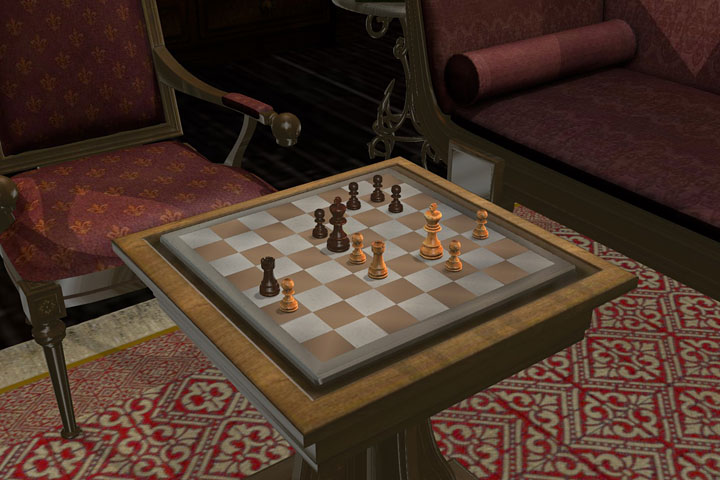













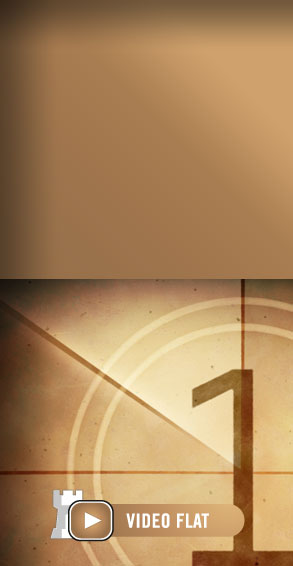



 There was quick agreement over all points but one. Would 60.Rc1! still have drawn, or is White already lost? Several analysts including Alex Fishbein, Zoran Petronijevic, Alberto Oggero and Karsten Müller were of the opinion that White is lost in all cases. Stockfish 9 even gives a -4.6 evaluation after 66.Kc2!!. I put this into the ChessBase Let's Check record. Great was my surprise when I received Charles Sullivan's analysis.
There was quick agreement over all points but one. Would 60.Rc1! still have drawn, or is White already lost? Several analysts including Alex Fishbein, Zoran Petronijevic, Alberto Oggero and Karsten Müller were of the opinion that White is lost in all cases. Stockfish 9 even gives a -4.6 evaluation after 66.Kc2!!. I put this into the ChessBase Let's Check record. Great was my surprise when I received Charles Sullivan's analysis. Zoran Petronijevic again came up the most convincing proof of the other points and his analysis follows. I only added the Sullivan drawing proof of 60.Rc1! and its consequences. Zoran's points are:
Zoran Petronijevic again came up the most convincing proof of the other points and his analysis follows. I only added the Sullivan drawing proof of 60.Rc1! and its consequences. Zoran's points are:
 There is one more thing you can do. It is a lot of fun, but also a serious challenge: Click on the rook icon below the notation window. This will allow you the play the above position against Fritz, at your level of playing strength (e.g. "Club Player"), right here on the news page. Note that your analysis, in which you can delete, move or promote lines, is stored in the notation as new variations. In the end you will find the game with your analysis in the cloud. So nothing is ever lost.
There is one more thing you can do. It is a lot of fun, but also a serious challenge: Click on the rook icon below the notation window. This will allow you the play the above position against Fritz, at your level of playing strength (e.g. "Club Player"), right here on the news page. Note that your analysis, in which you can delete, move or promote lines, is stored in the notation as new variations. In the end you will find the game with your analysis in the cloud. So nothing is ever lost.



